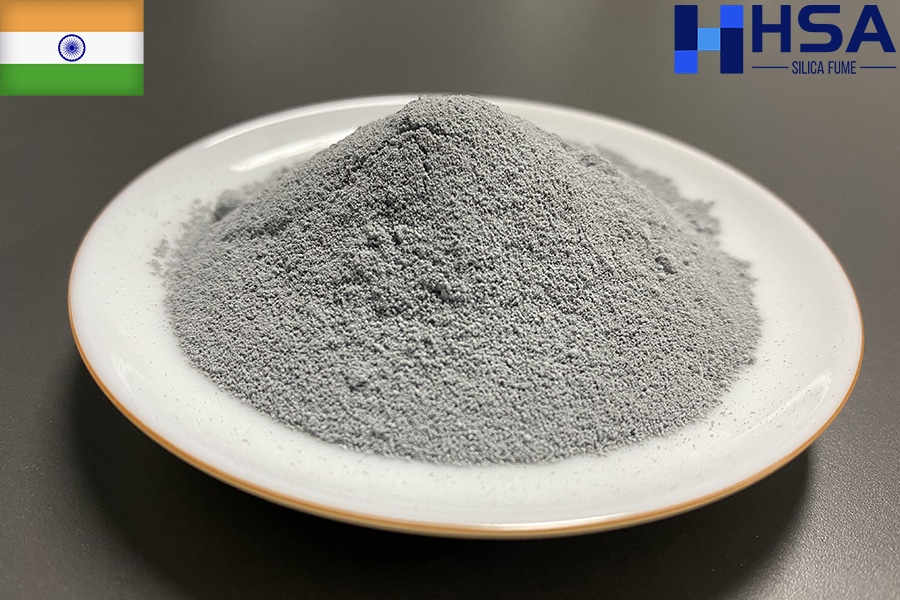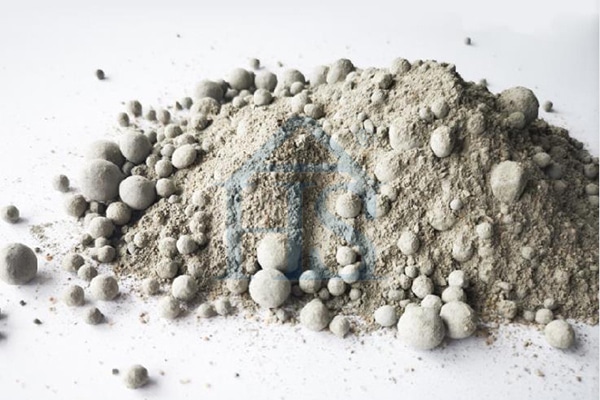Due to the continuing urbanization and industrialization, the construction industry is booming in many countries all around the world, from China to the United States, from South Korea to Australia. With the increased rate of construction activities, comes the increased demand for production and use of concrete. Silica fume presents a pozzolanic material commonly added to concrete to enhance its durability and mechanical properties.
Today, at Henan Superior Abrasives Import & Export Co., Ltd, we are going to take a close look at the effect of silica fume on the properties of concrete.
How Does Silica Fume Alter Properties of Concrete?
In order to understand the effect of silica fume on the properties of concrete, it is necessary to take a look at the chemical reaction that occurs once silica fume is added to the mixture.
When added to concrete, silica fume remains inert for some time. Then, as water begins to react with cement in the process called “hydration,” the chemical reaction results in two important compounds:
- Calcium Silicate Hydrate, or C-S-H. This is the crystalline compound that gives the cement its added strength.
- Calcium Hydroxide, or C-H. This is the reaction by-product, which works as a filler and fills the voids within concrete.
When a pozzolanic reaction occurs between silica fume and the produced Calcium Hydroxide, additional C-S-H compounds are created. These compounds effectively fill up the voids surrounding the hydrated cement particles, creating a denser matrix. As a result, concrete develops better compressive, flexural, and bong-strength properties.
The Effect of Silica Fume on Properties of Concrete: Research Findings
Micro filler silica fume is commonly used as a supplementary cementitious material. As described earlier, when added to concrete, it fills up its voids, thus enhancing its performance.
Various researches have been conducted, supporting the improved properties of the concrete upon silica fume addition. Below, we are going to summarize the findings of the recent research paper by S. Jagan and T. R. Neelakantan, which took a look at the “Effect of Silica Fume on the Hardened and Durability Properties of Concrete.”
Workability
The slump value in concrete is used to measure the consistency of freshly made concrete before it sets, indicating its workability and the ease with which concrete flows. Lower slump values in traditional mixes generally mean that the concrete is of higher quality and vice versa.
The workability study of the M40 grade concrete was conducted with the use of various replacement percentages of silica fume, ranging from 0% to 15%. The results demonstrate that the slump value decreases with the increased percentage of silica fume. This can be explained by the fact that higher proportions of silica fume tend to absorb more water due to the increased surface area of silica fume particles. As such, adding silica fume to concrete can significantly reduce its slump value and workability.
Compressive Strength
The study has also looked at the effect of adding silica fume on the compressive strength of two grades of concrete: M25 and M40. Overall, the compressive strength of concrete has improved with the higher percentage of silica fume added, increasing over time.
For example, when 15% silica fume was added to the M25 concrete, the compressive strength was measured at 26.56 MPa and 39.14 MPa at 7 and 28 days respectively. The maximum improvement in the strength was observed at 14 days, measuring 14.68%, as well as at 90 days, measuring 13.62%.
Similarly, for the concrete of M40 grade, the compressive was strength was measured at 36.14 MPa at 7 days, and 55.21 MPa – at 28 days. The maximum compressive strength improvement was 13.01% at 14 days and 12.19% at 90 days.
The findings can be explained by the continuous increase in the fineness of the silica fume particles. While the total surface area of the particles increases, they more effectively fill the voids in the concrete mixture, leading to the formation of a more closely packed structure. Reduced porosity, in turn, means improved strength of the entire mixture.
It is worth noting that the improvement in compressive strength is not linear beyond 28 days. This can be explained by the fact that an inhibiting product is formed after 28 days, which prevents the further chemical reaction of silica fume. In addition, with time, the pozzolanic activity of silica fume decreases, therefore reducing the strength improvement in the concrete after 28 days.
Elastic Modulus
Typically, higher values of elastic modulus translate into increased stiffness of the material. As such, a high performance concrete will have a higher modulus of elasticity as compared to a normal strength concrete. Understanding the effect of silica fume on the concrete’s elastic modulus can provide valuable insights into the properties and applications of different concrete mixtures.
The study has found that for both M25 and M40 grades of concrete, the elastic modulus increased with the increased proportion of silica fume. The maximum improvement was observed at 90 days with 15% replacement of silica fume, measuring 7.06% for M25 grade concrete, and 6.29% for M40 concrete.
This can be explained by the fact that the micro-filler silica fume fills up the voids in concrete and forms a closely packed structure. Upon loading, the load transfers grain-to-grain, leading to the increased strain and stress rate, thus increasing the elastic modulus of the concrete.
Autogenous Shrinkage
The autogenous shrinkage value describes the uniform reduction of the internal moisture as a result of cement hydration. This autogenous shrinkage is a major contributor to concrete cracking when the ratio of water to cement is below 0.4.
The study has found that the rate of shrinkage strain increases in both M25 and M40 concrete grades as the percentage of silica fume increases. The M40 grade concrete demonstrated the higher rate of autogenous shrinkage, as compared to the M25 grade.
As such, increasing the percentage of silica fume increases the shrinkage rate of concrete. Higher silica fume proportions fill up the voids in the cement paste and increase its internal stress. This, in turn, leads to additional expansion of the cement matrix, which may cause micro-cracks in the concrete and negatively affect its durability.
Acid Attack
Commonly used for marine applications, concrete needs to demonstrate reasonable resistance to acids and salts.
For both grades of concrete, the maximum resistance to acid penetration was observed at 15% replacement of silica fume. Upon an increase in the percentage of the silica fume, the resistance to acid penetration was also increased. This, again, can be explained by the pore filling ability of silica fume. By filling up the voids in the concrete, it is able to combat the ingression of harmful acids. In addition, SiO2 found in silica fume reacts with Ca(OH)2, forming an impermeable C-S-H gel. This gel contributes significantly to the reduction of harmful effects of the acid attack, and, thus, enhances the durability of the concrete.
Final Words
Overall, the study of the effect of adding different percentages of silica fume has concluded the following effect of silica fume on properties of concrete:
- Workability. Higher percentage of silica fume decreases the workability of the concrete.
- Compressive strength. Higher percentage of silica fume increases the compressive strength of the concrete.
- Elastic modulus. The addition of silica fume increases the elastic modulus of the concrete, even though no significant variation was observed between the different percentages of silica fume added.
- Autogenous shrinkage. Higher percentage of silica fume increases the autogenous shrinkage of the concrete.
- Acid attack. Higher percentage of silica fume increases the concrete’s resistance to acid attack.
This demonstrates that silica fume rightfully deserves its place in the manufacture of concrete. By augmenting the mechanical properties of various grades of concrete, silica fume can improve its strength and durability, expanding its potential applications in the construction industry.
To take advantage of the improved concrete properties associated with the application of silica fume, it is important to find a trusted silica fume supplier. At Henan Superior Abrasives Import & Export Co., Ltd, we offer various types of high-quality densified and undensified silica fume. Shop for silica fume now.





